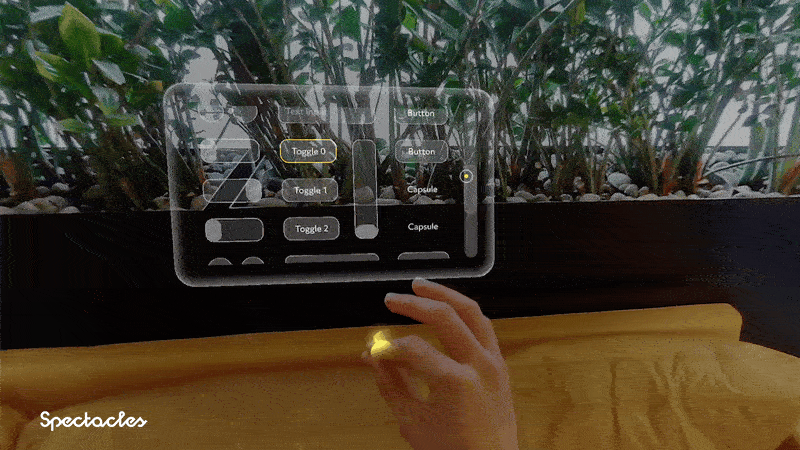Snap’s AR Glasses Add Star Wars, Avatar Minigames

▼ Summary
– Snap OS now includes Synth Riders, Star Wars, and Avatar: The Last Airbender minigames, which will be available on the consumer Snap Specs at launch in 2026.
– Current Snap Spectacles are a $99/month developer kit with limited battery life and bulk, but the consumer version promises a smaller, lighter, and more capable design.
– Snap OS is Android-based but restricts developers to building sandboxed “Lenses” using Lens Studio with JavaScript/TypeScript, enabling instant app launches and consistent interactions.
– The platform has expanded with Snap OS 2.0, adding consumer features like Travel Mode and improved Browser, alongside new APIs and major brand Lenses announced at Lens Fest 2025.
– Snap is building a content library with first-party and third-party Lenses to justify the expected high price of the consumer Specs and attract buyers.
Snap’s augmented reality platform is expanding its entertainment offerings with the addition of high-profile minigames based on Star Wars, Avatar: The Last Airbender, and the rhythm title Synth Riders. These new experiences will be ready for the consumer version of Snap Specs when they launch, marking a significant step in building a compelling content library for the upcoming hardware.
For those new to Snap’s ecosystem, the current Snap Spectacles function as a developer kit, available for $99 monthly or $50 for students. These AR glasses allow creators to build applications for the consumer-focused Snap Specs, which the company plans to release in 2026. The developer Spectacles feature a 46-degree diagonal field of view and offer angular resolution comparable to premium devices like the Apple Vision Pro. However, they come with notable limitations: battery life lasts only about 45 minutes, and at 226 grams, they are substantially heavier than many competing wearable displays. Snap CEO Evan Spiegel has promised that the final consumer model will be dramatically improved, with a much smaller and lighter design while retaining compatibility with all existing applications.
The true centerpiece of Snap’s strategy is Snap OS, its custom operating system. Built on an Android foundation, Snap OS operates differently from typical platforms. Developers cannot install standard APK files or utilize third-party engines such as Unity. Instead, they create sandboxed applications, known as Lenses, using the company’s proprietary Lens Studio software for Windows and macOS. This environment uses JavaScript or TypeScript to interface with high-level APIs, while the OS manages complex tasks like rendering and core interactions. This approach yields benefits similar to other modern spatial computing platforms, including nearly instantaneous app launching, uniform interaction patterns, and seamless support for shared multi-user experiences. The system even allows the companion mobile app to display a spectator view for almost any Lens. While multitasking is not currently supported, this is likely a temporary hardware constraint rather than a permanent software limitation.
Historically, Snap has concentrated on providing new tools for developers. At the recent Lens Fest 2025 event, the company unveiled a suite of new APIs that have already been adopted by a vibrant community of AR creators. With the rollout of Snap OS 2.0, the focus is broadening to include features aimed at end-users. These include a Travel Mode, an enhanced web browser with WebXR compatibility, and a dedicated Gallery application.
The announcement at Lens Fest also highlighted new Lenses from major entertainment brands. Synth Riders, a well-known XR rhythm game already available on platforms like Meta Quest and Apple Vision Pro, has now been ported to Snap OS. Early demonstrations, though limited by the hardware’s 30-second recording cap, show the game adapting effectively to the AR glasses format. A notable technical achievement is the way virtual objects cast light onto real-world surfaces, made possible because Snap OS supplies Lenses with a continuous scene mesh, allowing digital content to blend naturally with physical environments.
Another major addition is Star Wars: Holocron Histories, developed by ILM Immersive. This Lens offers three distinct narrative experiences where users are mentored by a former Force student. The scenarios include a confrontation between Jedi and Sith, a cautionary story from the Nightsisters, and an inspirational account of the Guardians of the Whills. This project continues ILM Immersive’s history of creating immersive Star Wars content for various platforms.
Fans of the animated series can look forward to the Avatar: The Last Airbender Lens, which enables players to train alongside Aang. Using head motions and hand gestures, participants can manipulate air to strike targets. Furthermore, Snap has confirmed that Lenses from Figma and Tripadvisor are in development, though specific details remain under wraps.
As the 2026 launch approaches, Snap is clearly working to assemble a diverse and engaging content portfolio. With these new branded minigames joining existing third-party offerings like Lego Bricktacular and updated first-party applications such as Yoga and Translation, the platform is steadily accumulating a solid foundation of software. Given that the consumer Snap Specs are expected to carry a premium price tag, potentially costing thousands of dollars, a robust and appealing content library will be crucial for convincing customers of the device’s value. The company’s progress suggests a determined effort to ensure that the final product delivers on its ambitious promises.
(Source: Upload VR)



